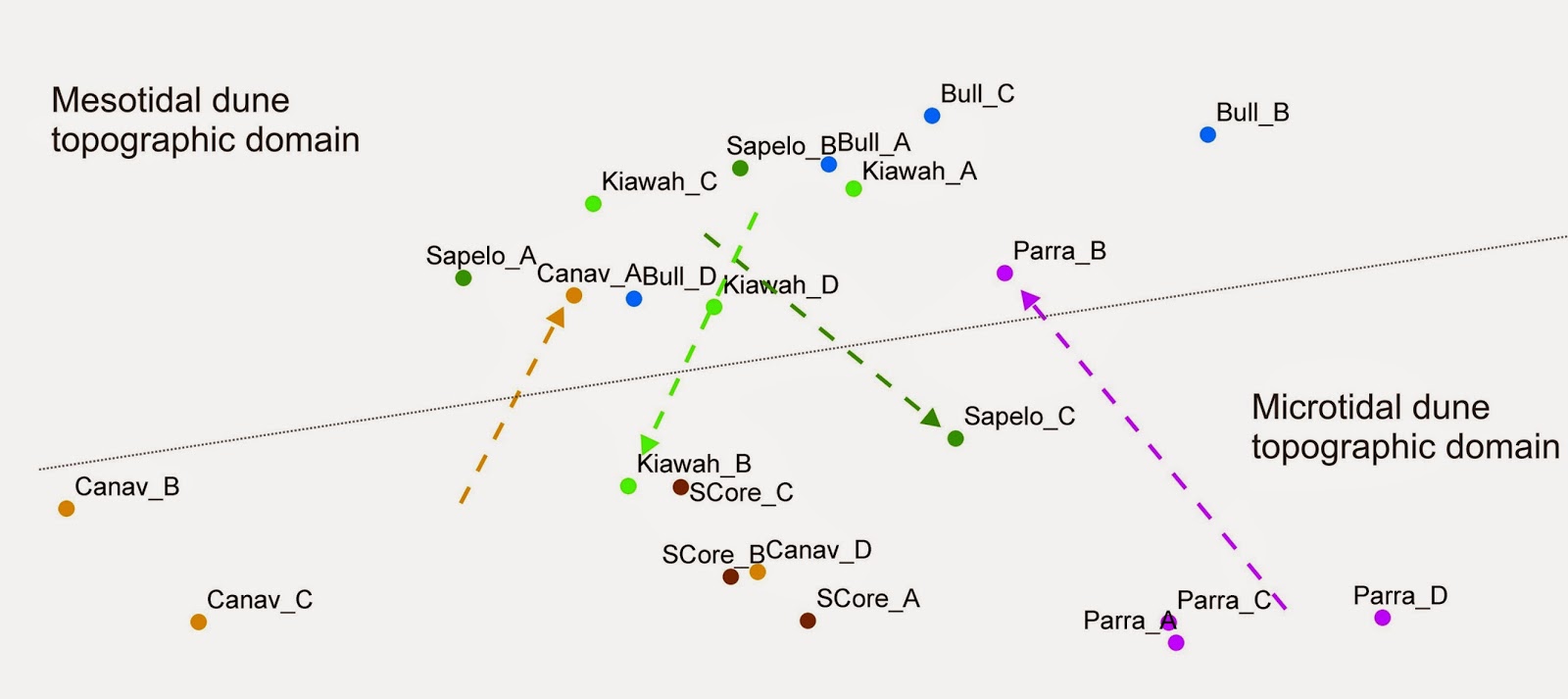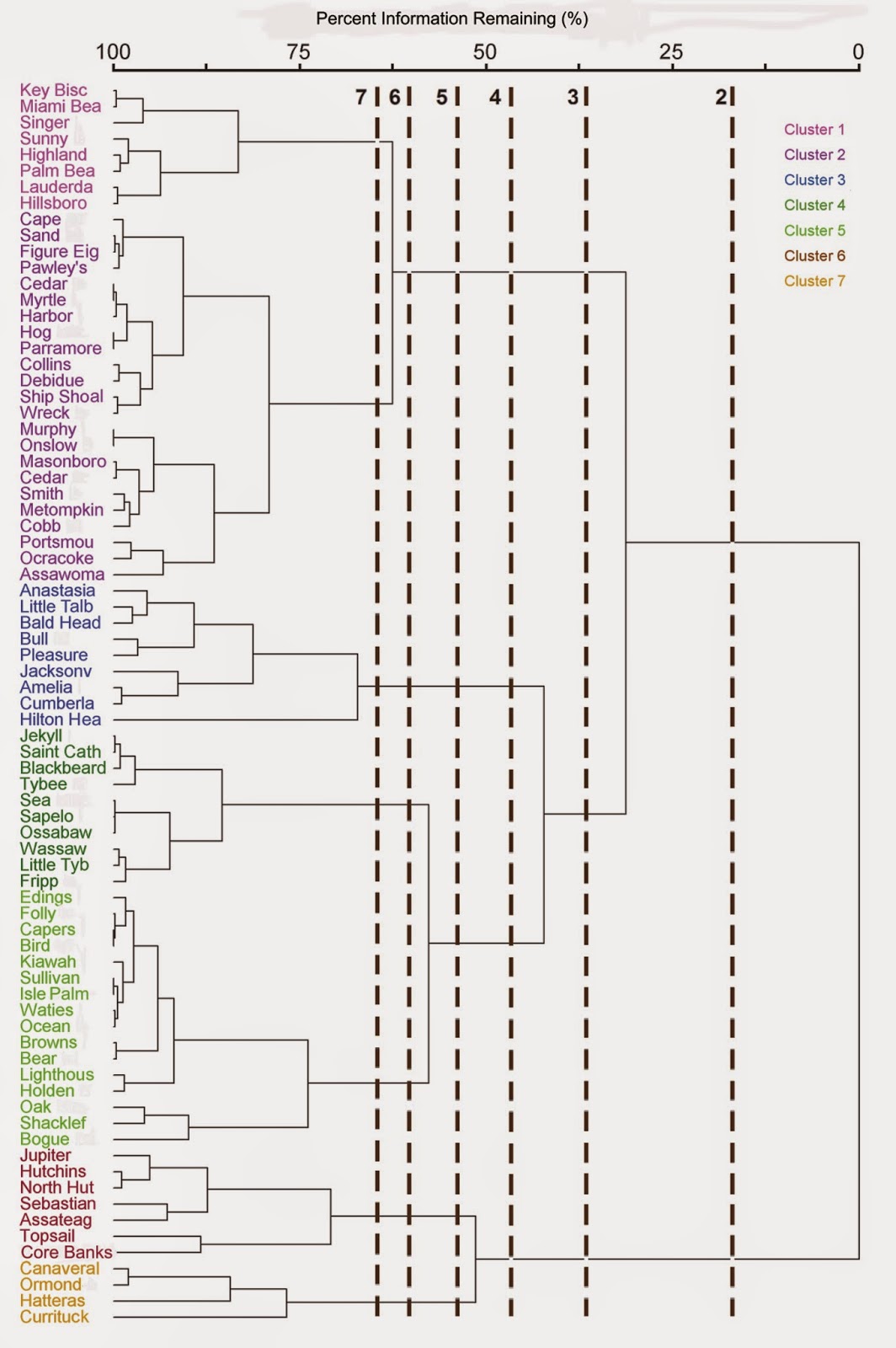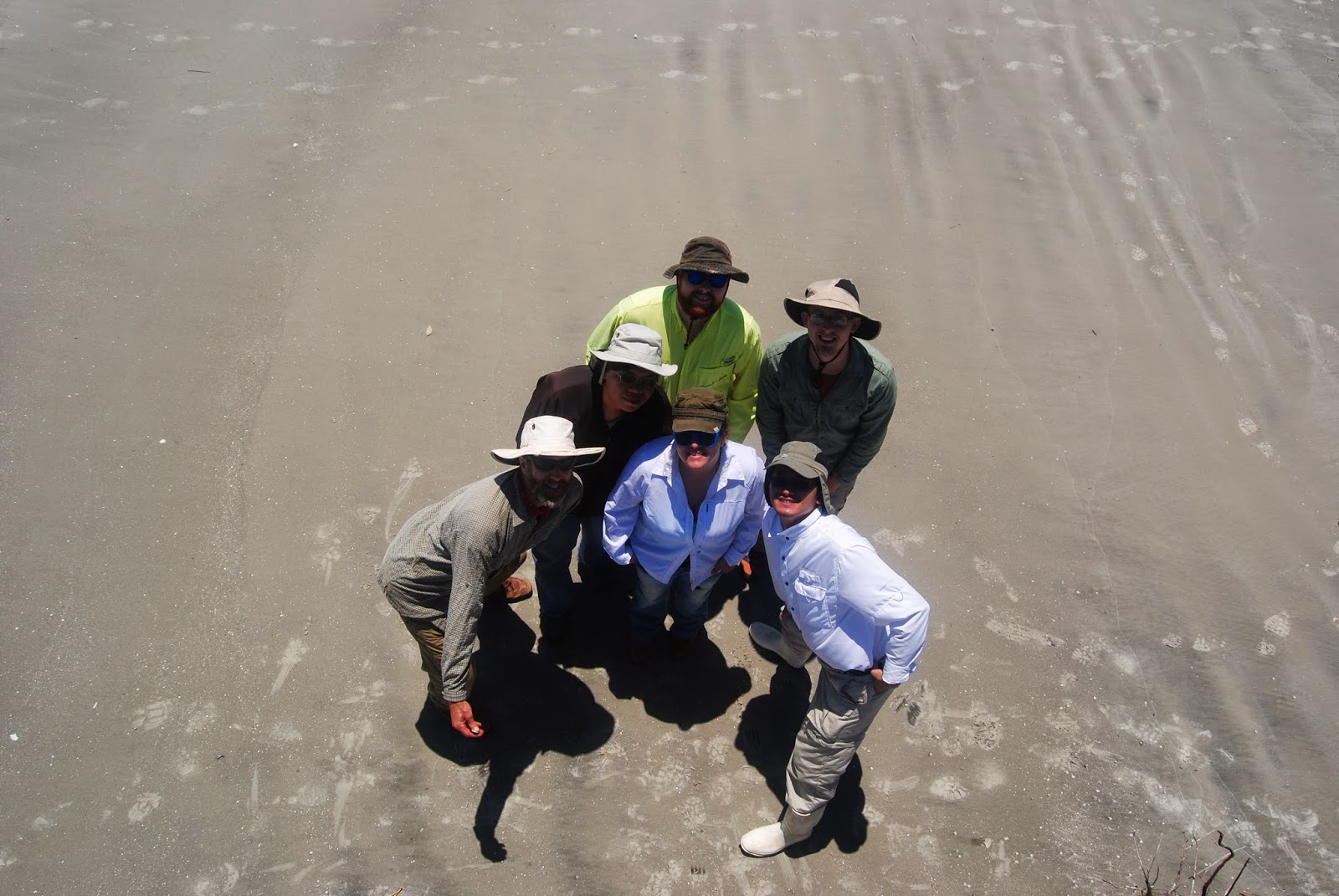My graduate student Jackie Monge recently completed a thesis that examined the similarities in dune topography among different barrier island morphologies. We found that dune topography tends to converge around two basic forms (top graphic), an overwash-reinforcing topography associated with microtidal barrier island dune topographies. and an overwash resisting topography characteristic of mesotidal barrier islands. This convergence held up over a range of cluster groupings of barrier island morphology (middle graphic). Dune topography was compared on the basis of lidar-derived indices of landscape patch structure of elevational ranges, directional spatial autocorrelation structure of elevation, and frequency distribution data for elevation (bottom graphic, lidar for a site on Sapelo Island). Her thesis can be accessed here.
























